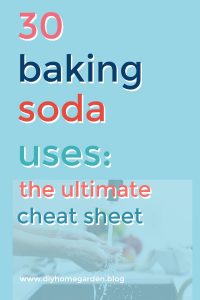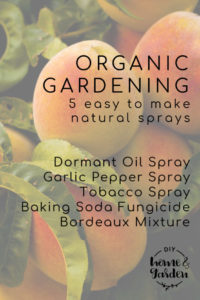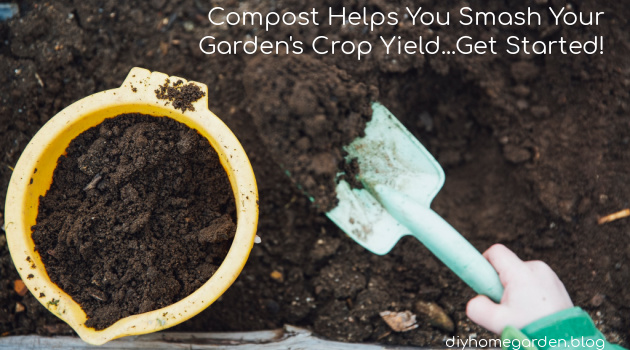Organic gardening, especially plants and fruit trees, requires attention year-round. But this fact is especially true during the growing season. The most enjoyable part of this attention is watching the fruit grow. And the most frustrating part is dealing with pests and diseases when they arise.
This post contains organic gardening solutions that you can mix at home.
Warning: Not all of these solutions work for every situation. Consult the internet (?!) or your local county extension agent for specific questions and recommendations, especially if you are having a significant issue with a pest.
There are many useful and relatively non-toxic “conventional” methods for fruit tree pest control, including pyrethrins, which are chemicals synthesized from a certain chrysanthemum species. Pyrethrins and their derivatives are sometimes considered organic – depending on who you talk to. But they are usually considered to have low toxicity, especially when applied correctly.
You’ll also find a wealth of ready-made organic insecticides and fungicides on the market. Many of these are now available at home improvement stores and big-box stores where they weren’t just a few years ago. But if you are a little more, adventurous…you can mix up some pretty useful pest-killing mixtures at home.
Why try organic gardening options?
Growing up in the southern U.S., one of the things I became interested in was making my own natural pesticides. Here is a list of five organic sprays that the gardener can create at home for their own garden.
1 – Dormant oil spray
Historically, dormant oil was applied to fruit trees in winter to smother over-wintering pests. Dormant soil sprays were made of refined petroleum. Today, most gardeners and orchards use horticultural oils, which are still petroleum-based but are often gentler on the environment. Most horticultural oils are mineral oil-based. Oils sprayed on dormant trees smother overwintering insect pests that will bother the tree in spring. To create your own oil product to apply to a dormant fruit tree, there are a couple of different ways to do it.
Mineral-oil based – Mineral-oil based dormant oil is easy to make at home. Add 3-4 ounces of high-quality mineral oil to one gallon of water. Next, add one ounce of soap to the water. Mix the contents thoroughly and spray on the tree itself, avoiding blooms. Coat the tree, and shake up the mixture every few minutes.
Canola-based dormant oil – Made especially for application when the tree is dormant. Add two tablespoons of canola oil and one tablespoon of baking soda to one gallon of water. Mix the contents well and spray on dormant fruit trees. Cover every surface and avoid spraying on windy or frigid days.
2 – Garlic pepper spray
This is one of our personal favorites that we have used to clear an infestation of smaller insects in the garden. Chop one clove of garlic and place it in one quart of water. Add either a teaspoon of ground cayenne pepper or a ground hot pepper from the garden. Add one tablespoon of liquid soap the mix. Allow the mix to sit for 24 hours and then strain out the larger pieces. Pour this mixture into a sprayer or a spray bottle and apply to insect-infested plants. This is a “hot” concoction, and it will burn your eyes or sensitive skin, so use gloves for safety. Don’t rub your eyes and watch those insect pests die!
3 – Tobacco spray
Tobacco isn’t only harmful to humans! Take either purchased or homegrown tobacco (2-3 actual leaves!), tear up the leaves, and mix the leaf pieces with one gallon of water. Allow the solution to sit for 24 hours and then spray it on infested plants. This is a pesticide that is toxic to most insects, including beneficial ones. It is harmful to tomatoes, peppers, and eggplants. This one is very effective if there is a major pest infestation.
4 – Baking soda-based fungicide
Baking soda was fungicide in some instances, starting more than 100 years ago. Its efficacy may be debatable now, but in a few cases, a baking soda-based fungicide may effective. It is easy and also inexpensive to make. And it definitely won’t harm the plant. To make this concoction, add five teaspoons of baking soda and five teaspoons of hydrogen peroxide to one gallon of water. Spray powdery mildew, black spot, and other fungal diseases. Apply at least once a week until the fungus is gone (or you need to upgrade to a copper fungicide!). This mixture seems most effective on minor occurrences of powdery mildew.

5 – Bordeaux mixture
Bordeaux mixture is a traditional fungicide that is still effective at dealing with fungal diseases, even in commercial orchards and vineyards. Developed originally for vineyards more than 150 years ago, it is a mixture of copper sulfate and lime. For detailed info on how to make and use Bordeaux mixture, check out this recipe courtesy of the University of California Davis.
Please note. We highly recommend this fungicide, but be careful. Some of the chemical components of it are rather intense. So heavy use in the soil for decades can cause excessive copper build-up. But this is still considered an organic solution. In fact, vineyards still utilize this solution today.

BONUS: You can make a simple insecticide from natural soap (such as Dawn Simply Clean). Add two tablespoons to every cup of water, and put into a clean spray bottle or a garden sprayer. Shake well and apply directly to insect pests. This insecticide is harmful to beneficial insects as well, but it will take care of insect pests, including grasshoppers if it’s applied directly to the insect in massive doses.
There are plenty of other organic, homemade mixtures out there. Some are more effective than others, and on more extensive operations, it is often necessary to purchase conventional pesticides to produce marketable produce. Do you have any favorite homemade pesticides that you’d like to share? We want to hear them! And (with your permission) we’d love to share them.
Meet the author: Trey Watson is the owner of Legg Creek Farm, LLC. He is also an author of organic gardening books.


